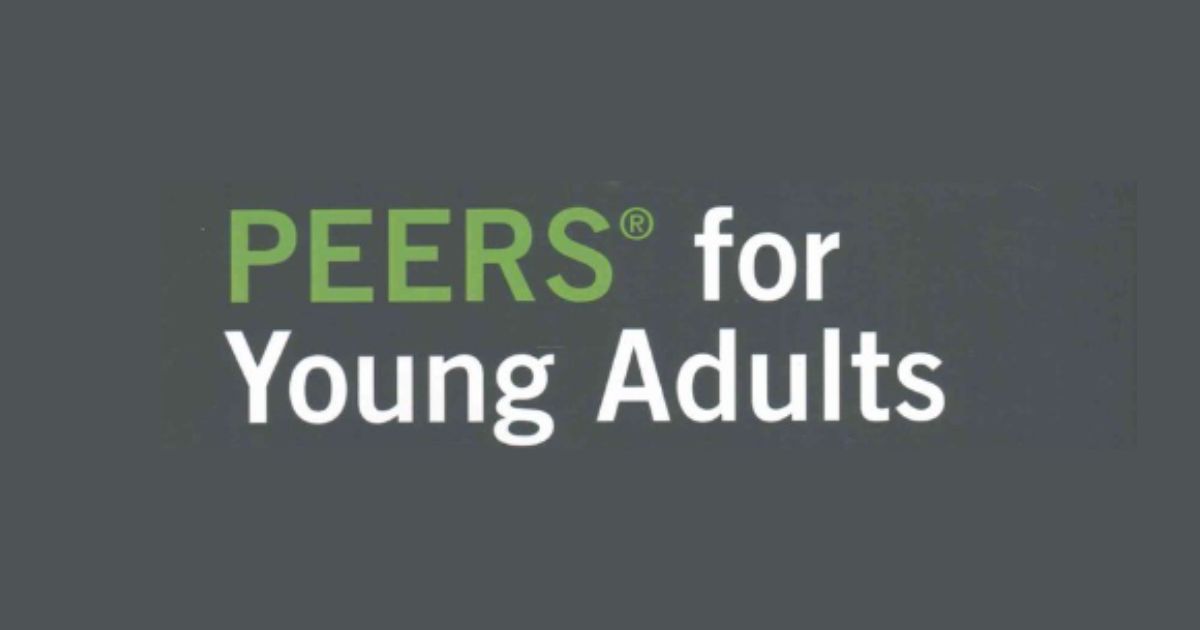A neurodevelopmental condition called Autism Spectrum Disorder (ASD) is a condition that uniquely affects individuals, presenting challenges in social interaction, communication, and repetitive behaviors.
Understanding the intricacies of ASD is crucial for creating inclusive environments and providing effective support for individuals on the spectrum.
One program that has shown remarkable success in fostering social skills and improving overall well-being for those with ASD is the Peers Program.
This innovative initiative, designed specifically for individuals with autism, focuses on developing social skills through evidence-based interventions.
In this blog, we delve into the depths of ASD, explore its diverse manifestations, and highlight the immense benefits of the Peers Program in empowering individuals with autism to thrive socially.
What is Autism Spectrum Disorder?
The medical condition, Autism Spectrum Disorder, is characterized by various challenges in social interaction, communication, and repetitive or restricted behaviors. It affects individuals across a broad spectrum, with varying degrees of severity and unique combinations of symptoms.
People with ASD may struggle with social interactions and have difficulty understanding and responding to verbal and nonverbal cues. They might exhibit repetitive behaviors, such as hand-flapping or rocking, and may be highly sensitive to sensory stimuli. Additionally, individuals with ASD often demonstrate intense focus and exceptional abilities in specific areas, such as mathematics, music, or art.

ASD typically emerges in early childhood, and its causes are multifactorial, involving genetic, environmental, and neurological factors. Diagnosis is based on behavioral assessments, and early intervention is crucial for improving outcomes.
It is important to recognize that every person with ASD is unique, with their own strengths, challenges, and potential. Increased awareness, acceptance, and support can help individuals with ASD thrive and lead fulfilling lives, promoting a more inclusive society that embraces neurodiversity.
Characteristics of Autism Spectrum Disorder
Autism Spectrum Disorder (ASD) encompasses various types and characteristics. While each individual with ASD is unique, some common patterns and traits can be observed. Here are some key types and characteristics of ASD:
- Classic Autism: This is typically the most severe form of ASD. Individuals often exhibit significant delays in language and communication skills, struggle with social interaction, and display repetitive behaviors.
- Pervasive Developmental Disorder-Not Otherwise Specified (PDD-NOS): This category includes individuals who display some, but not all, of the characteristics of classic autism or Asperger’s Syndrome. They may exhibit milder symptoms or have atypical presentations.
Common characteristics of ASD include:
- Impairments in social communication: Difficulties in using and interpreting verbal and nonverbal communication cues, understanding and responding to social interactions, and limited eye contact.
- Repetitive behaviors and restricted interests: Engaging in repetitive movements or actions, rigid adherence to routines, intense focus on specific topics or objects, and resistance to change.
- Sensory sensitivities: Heightened or reduced sensitivity to sensory stimuli, such as sounds, lights, textures, tastes, or smells- which can lead to sensory overload or avoidance behaviors.
It’s important to note that the autism spectrum is broad, and individuals can exhibit a combination of these characteristics to varying degrees. Recognizing and understanding these types and characteristics helps provide appropriate support and interventions for individuals with ASD.
Prevalence and Diagnosis of Autism Spectrum Disorder
Diagnosing ASD involves a comprehensive evaluation by healthcare professionals, such as pediatricians, psychologists, and developmental specialists. It typically includes assessments of social communication skills, repetitive behaviors, and sensory sensitivities.
Observations from parents, caregivers, and teachers also play a crucial role in the diagnostic process. Early detection and intervention are essential for individuals with ASD. In addition, early signs of
ASD can emerge as early as 18 months of age, and early intervention can lead to better outcomes. Ongoing research and awareness efforts aim to improve the diagnostic process and promote timely interventions for individuals with ASD.
Challenges Faced by Individuals with Autism Spectrum Disorder
Individuals with ASD face various challenges impacting their daily lives and overall well-being. Here are some common challenges experienced by individuals with Autism Spectrum Disorder:
- Social interaction difficulties: People with ASD may struggle to understand and interpret social cues, making initiating and maintaining relationships challenging. They may need help understanding social norms, reading facial expressions, or engaging in reciprocal conversation.
- Communication challenges: Many individuals with ASD have difficulties with language development, including speech delays, echolalia (repeating words or phrases), or difficulties with nonverbal communication. This can make expressing their needs, thoughts, and emotions challenging.
- Sensory sensitivities: Individuals with ASD may experience sensory sensitivities, such as being overly sensitive or under-responsive to sensory stimuli like noise, light, touch, or smells. These sensitivities can lead to discomfort, anxiety, or avoidance of specific environments or activities.
- Restricted and repetitive behaviors: Many individuals with ASD engage in repetitive behaviors, such as rocking, hand-flapping, or intense fixations on particular objects or topics. These behaviors can interfere with daily functioning and limit their flexibility in adapting to changes.
- Executive function challenges: Individuals with ASD may struggle with executive functioning skills, such as organizing, planning, and managing time. They may struggle to initiate tasks, shift attention, or cope with transitions.
How the Peers Program Benefits Individuals with Autism Spectrum Disorder
A complex condition, Autism Spectrum Disorder (ASD), affects individuals in various ways, making social interactions and relationships challenging.

However, the Peers Program has emerged as a beacon of hope for individuals with ASD, offering a unique and practical approach to improving social skills and overall quality of life.
This groundbreaking program provides evidence-based interventions and support tailored specifically to the needs of individuals on the autism spectrum.
In this section, we will explore the transformative benefits of the Peers Program.
Social Skills Development and Enhancing Peer Interactions through the Peers Program
The Peers Program focuses on teaching individuals with ASD important social skills through group-based sessions. Participants engage in various activities, including role-playing, video modeling, and group discussions. They learn skills such as initiating conversations, joining and participating in activities, and managing conflicts.
One unique aspect of the Peers Program involves typically developing peers as social coaches. These peers serve as role models, providing guidance and feedback to individuals with ASD during the sessions. Including typically developing peers fosters naturalistic social interactions and helps individuals with ASD generalize their newly learned skills in real-world settings.
By participating in the Peers Program, individuals with ASD can improve their social communication, increase their confidence, and develop meaningful friendships. The program aims to enhance their overall quality of life by equipping them with essential social skills necessary for successful peer interactions and social integration.
Strategies for Implementing the Peers Program in Various Settings
The PEERS Program offers a wide range of strategies for implementing the program in various settings, providing numerous benefits for individuals with Autism Spectrum Disorder (ASD) and their peers. The program’s structured curriculum, evidence-based techniques, and emphasis on social skill development make it highly effective.
One of the key benefits of the PEERS Program is its versatility in different settings. The program is adjustable to suit any scenario’s specific needs and goals, whether implemented in educational settings, therapeutic environments, community centers, or virtually. This adaptability allows maximum participation and engagement from individuals with ASD and their peers.
The program’s focus on inclusive environments is another significant benefit. The PEERS Program promotes social integration and acceptance by involving typically developing peers as social coaches and role models. It fosters positive peer interactions, empathy, and understanding among participants, leading to meaningful friendships and improved social well-being for individuals with ASD.
Research Findings on the Efficacy of the Peers Program
Research findings on the efficacy of the Peers Program have consistently shown positive outcomes for individuals with Autism Spectrum Disorder (ASD). Several studies have examined the program’s effectiveness in improving social skills and peer interactions.

Research has indicated that participation in the Peers Program significantly improves various areas. These include enhanced social communication skills, increased social engagement, improved ability to initiate and maintain conversations, and a better understanding of social cues. Participants have also demonstrated increased flexibility in social interactions and greater perspective-taking performance.
Furthermore, studies have shown that the benefits of the Peers Program extend beyond the program’s duration. Participants have reported maintaining and transferring the acquired social skills to other settings, such as school and community environments.
The Best Peers Therapy Solution
At Burns Virtual Psychological Solutions, Dr. Burns and her team are dedicated to providing comprehensive assistance to individuals and families. They are committed to helping individuals accept themselves, learn valuable skills to overcome challenges, and foster healing. Take the first step towards a brighter future by contacting Burns Virtual Psychological Solutions today.









